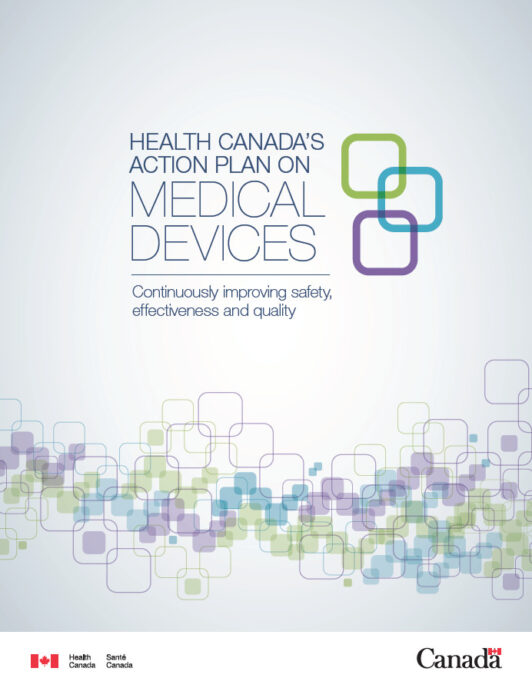In early 2019 Health Canada released more specifics of their Action Plan on Medical Devices. The Action Plan is intended to reinforce Health Canada’s commitment to ensuring that Canadians have access to safe and effective medical devices based upon the most up to date information. It has a three-prong strategy involving:
i) improve regulatory rigor for medical device path to market,
ii) strengthen post-marketing monitoring and follow-up, and
iii) increase transparency to the public.
The following are 7 interesting outcomes of Health Canada’s planned initiatives.
- Extend Investigational Testing to Health Care Professionals
Currently, only medical device manufacturers can test unapproved devices within Canada via the Investigation Testing Application. This will be extended to independent researchers and Health Care professionals who often develop novel medical devices as a result of being on the front line of medicine. This should enable an increase in research of these novel devices while ensuring the protection and wellbeing of patients. A Notice of Intent is planned for June 2019 on this subject.
- Increase Stringency of Evidence Requirements for Approvals
Health Canada plans on tightening the review process to ensure appropriateness of evidence requirements and to ensure international alignment. The focus here will be on medical device licenses for higher risk devices. Expect a draft guidance document in November 2019 to provide more details on what this means for device manufacturers.
- Develop a New Committee Focused on Women’s Health
This measure comes out of the desire to leverage the use of outside medical and engineering experts, including the Canadian Institutes of Health Research. One of the focus committees will be women’s health. This is likely in response to the public’s concern for certain devices that have been involved with adverse outcomes for women. Other planned committees will focus on cardiovascular devices and digital health. Plans for establishing these committees are already underway.
- Improve Reporting of Incidents by Healthcare Institutions
Two new initiatives will promote increased incident reporting. The first one is directed at training hospitals and other non-hospital healthcare sites and covers the importance of incident reporting and the value of providing quality information. The other involves mandating hospitals to report incidents and expanding the Canadian Medical Devices Sentinel Network (CMDSNet). This network facilitates sharing information on patient outcomes including medical device safety info. The goal is to start expanding CMDSNet’s reach to long term care facilities and private clinics in mid-2019.
- Increase Reporting Requirements from Medical Device Manufacturers
Along the trend of encouraging timely reporting, is the idea to place more reporting requirements on device manufacturers. Health Canada will increase their authority to compel manufacturers to collect and assess medical device risk-benefit information based on studies or warnings released by other regulatory agencies. Additionally, Health Canada will introduce a requirement for manufacturers to provide notification within 72h of risk communications from foreign markets, label changes and recalls. Look for draft regulations on these topics in June of 2019.
- Publish Regulatory Decision Summaries (RDSs) for newly licensed Class III Medical Devices
Currently review decisions are made available via the web for class IV devices. Health Canada will be adding class III devices to the RDS scope. These publications provide high level information on the evidence reviewed for regulatory approval. The implementation of this initiative is currently underway (early 2019).
- Publish Medical Device Incident Data
The establishment of a medical device incident database is another step towards increased transparency. The database will be downloadable and searchable, and will provide the public with more information on incidents involving medical devices approved in Canada. The plan is to make this online database available at the end of 2019.
This is just a small sample of interesting projects and initiatives from the Action Plan. For a full breakdown of activities visit, Health Canada’s Action Plan on Medical Devices: Continuously Improving Safety, Effectiveness and Quality. The overall goal of the Action Plan initiatives is to increase patient safety and provide Canadians with more information about the medical devices they rely on.
Although it may appear that the plan could be cumbersome for medical device manufacturers, the Canadian public will benefit and there will be better alignment of policies with international regulators. Stay tuned for more notices and guidance documents from the Medical Devices Bureau expanding on the regulatory changes and new initiatives.
Deborah Pinchev is a StarFish Medical’s Toronto QA/RA Manager. She is inspired to write blogs by her interest in helping companies develop and bring to market new and innovative devices.
Image: Health Canada
